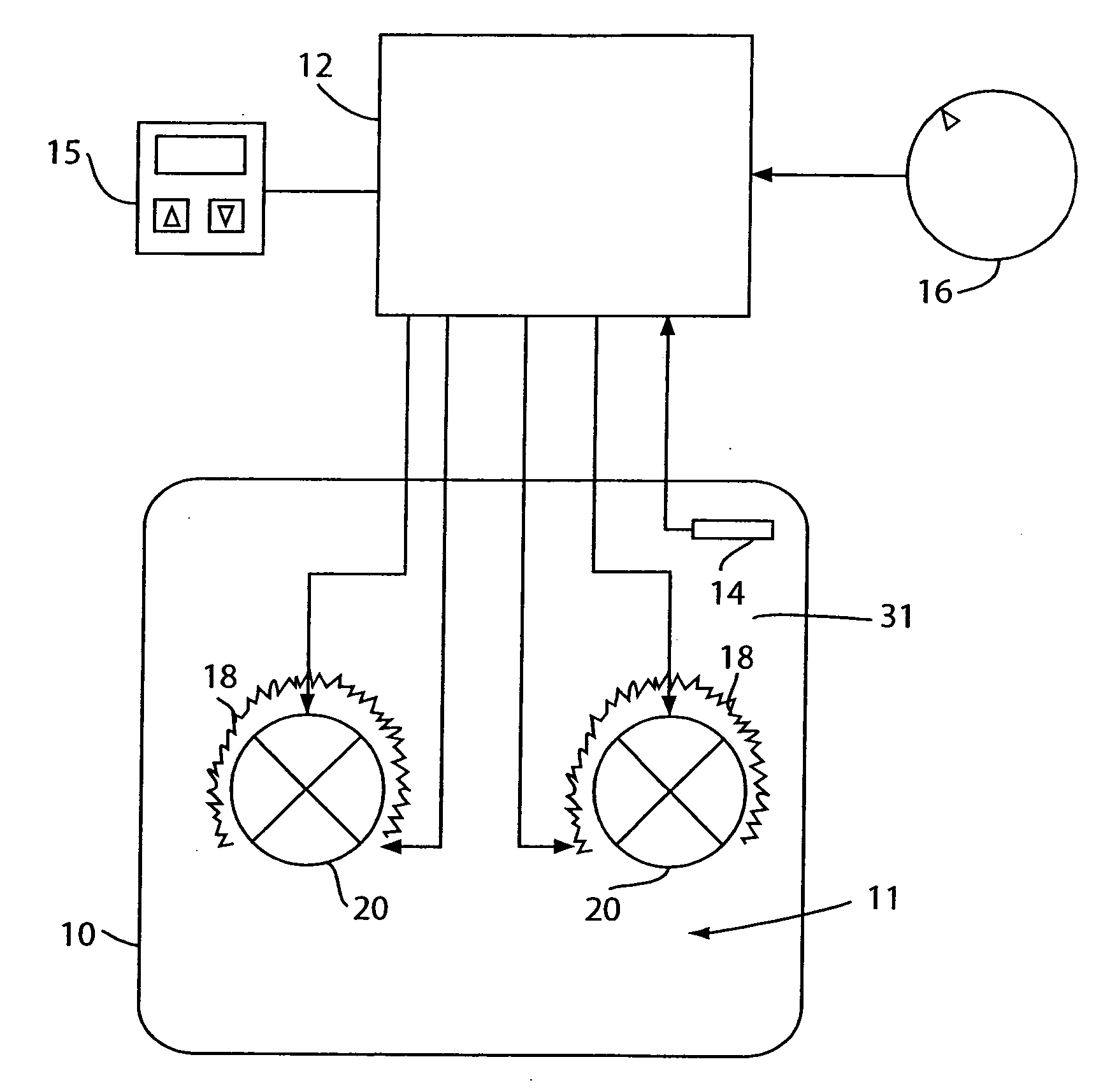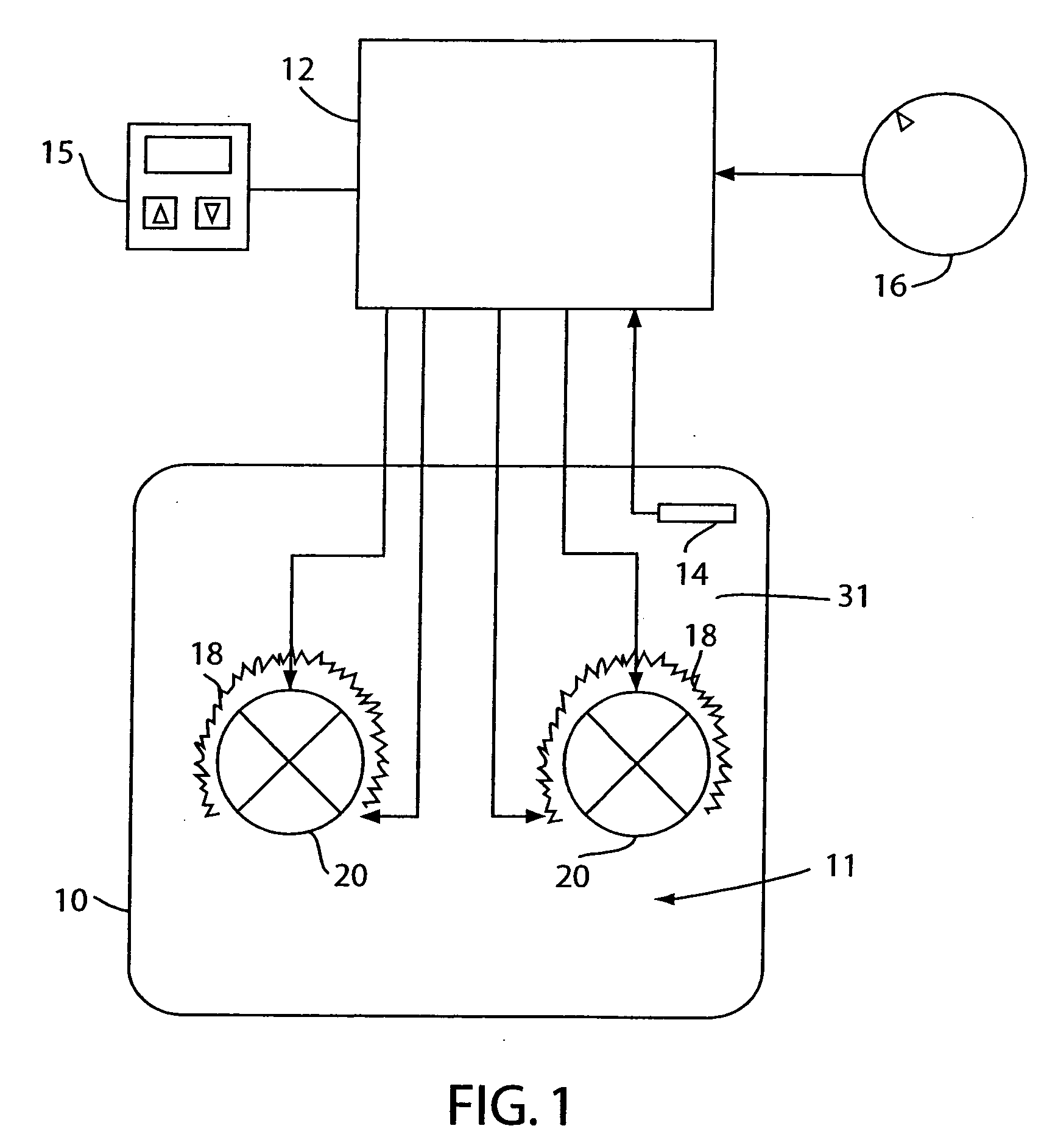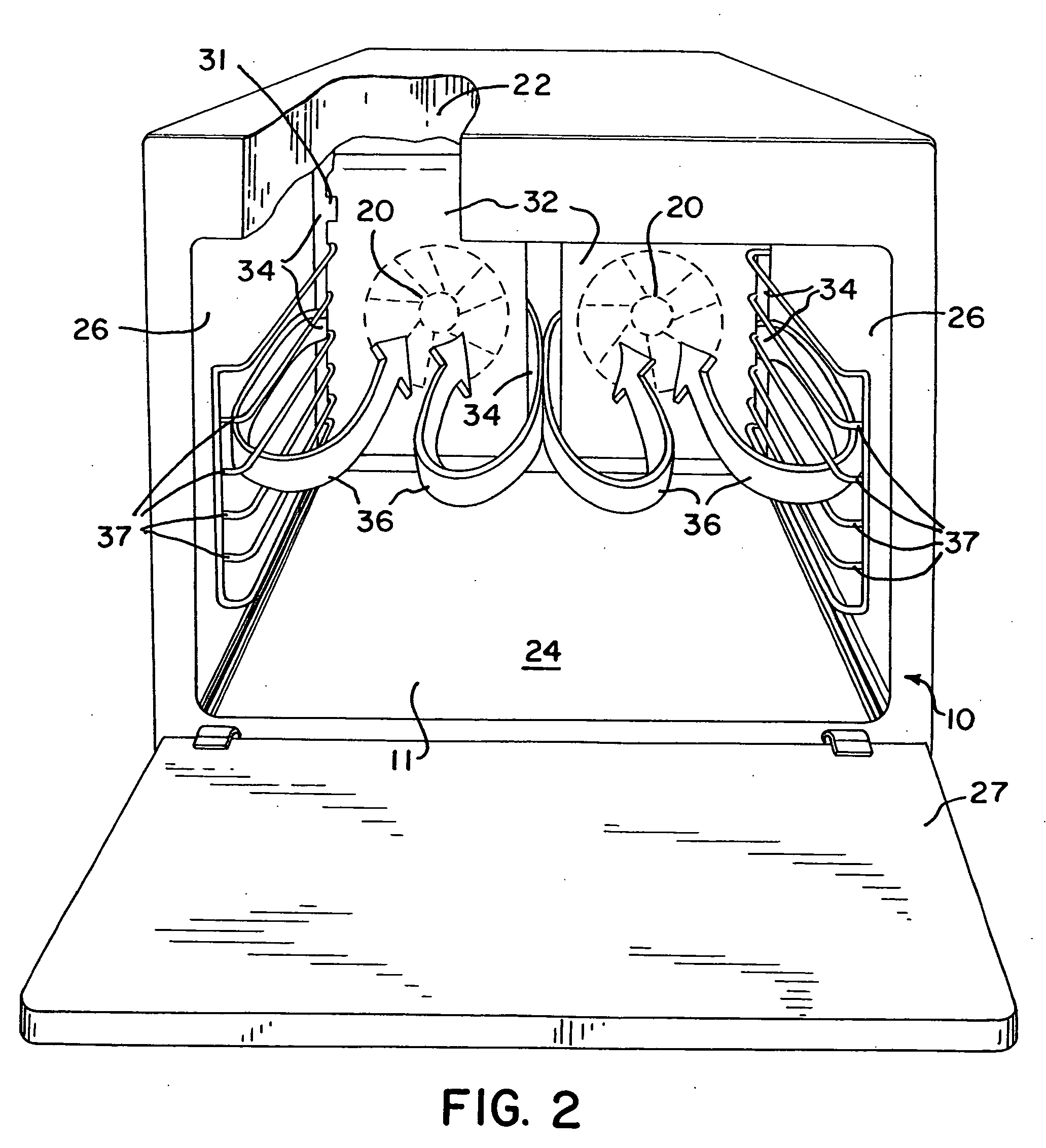Convection oven with forced airflow circulation zones
a technology of convection oven and circulation zone, which is applied in the field of convection oven, can solve the problems of batter leaning, overbrowning the edges of bakery items such as cakes and muffins, and aggravating the problem of air temperature uniformity, so as to optimize convecting gas circulation, minimize heating time, and improve air temperature uniformity
- Summary
- Abstract
- Description
- Claims
- Application Information
AI Technical Summary
Benefits of technology
Problems solved by technology
Method used
Image
Examples
Embodiment Construction
[0034] An exemplary forced air convection oven in accordance with the present invention will be described in detail with reference to the attached figures. For convenience, the following description refers to air as the convecting gas; however, any suitable gas, examples of which include nitrogen, steam, combustion gases from a gas-fired heating element, or a combination of such gases, may be used as well. Similarly, the following description refers to use of food in the invention in a convection oven for cooking food. It should be understood, however, that the present invention may be used to process any material suitably processed in a convection oven, including materials processed using flow-through ovens such as solderable circuit boards or web materials.
[0035] As shown in schematic view in FIG. 1, a forced air convection oven in accordance with the present invention may include an oven chamber 10 surrounding an internal cavity 11, a controller 12, a temperature sensor 14, a te...
PUM
 Login to View More
Login to View More Abstract
Description
Claims
Application Information
 Login to View More
Login to View More - R&D
- Intellectual Property
- Life Sciences
- Materials
- Tech Scout
- Unparalleled Data Quality
- Higher Quality Content
- 60% Fewer Hallucinations
Browse by: Latest US Patents, China's latest patents, Technical Efficacy Thesaurus, Application Domain, Technology Topic, Popular Technical Reports.
© 2025 PatSnap. All rights reserved.Legal|Privacy policy|Modern Slavery Act Transparency Statement|Sitemap|About US| Contact US: help@patsnap.com



